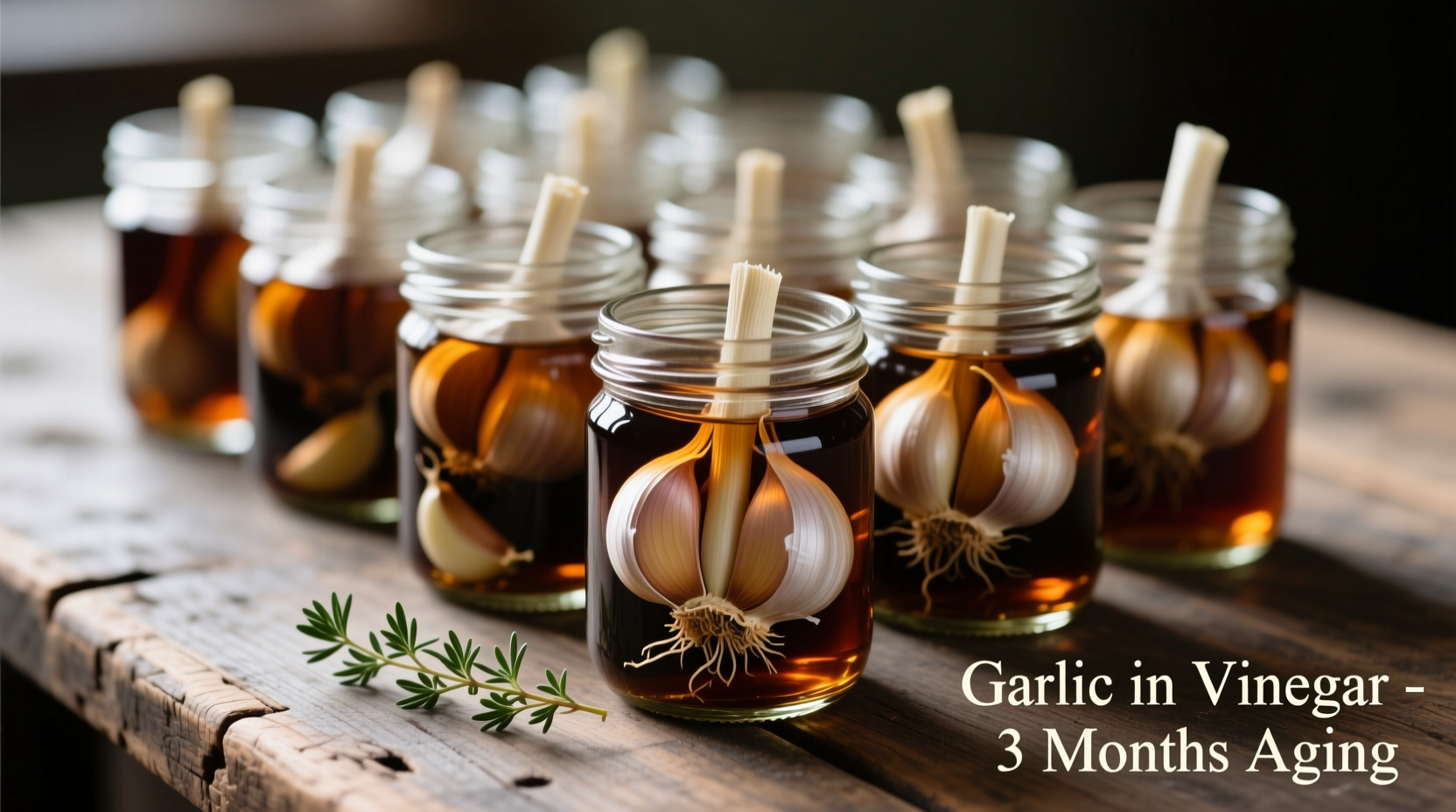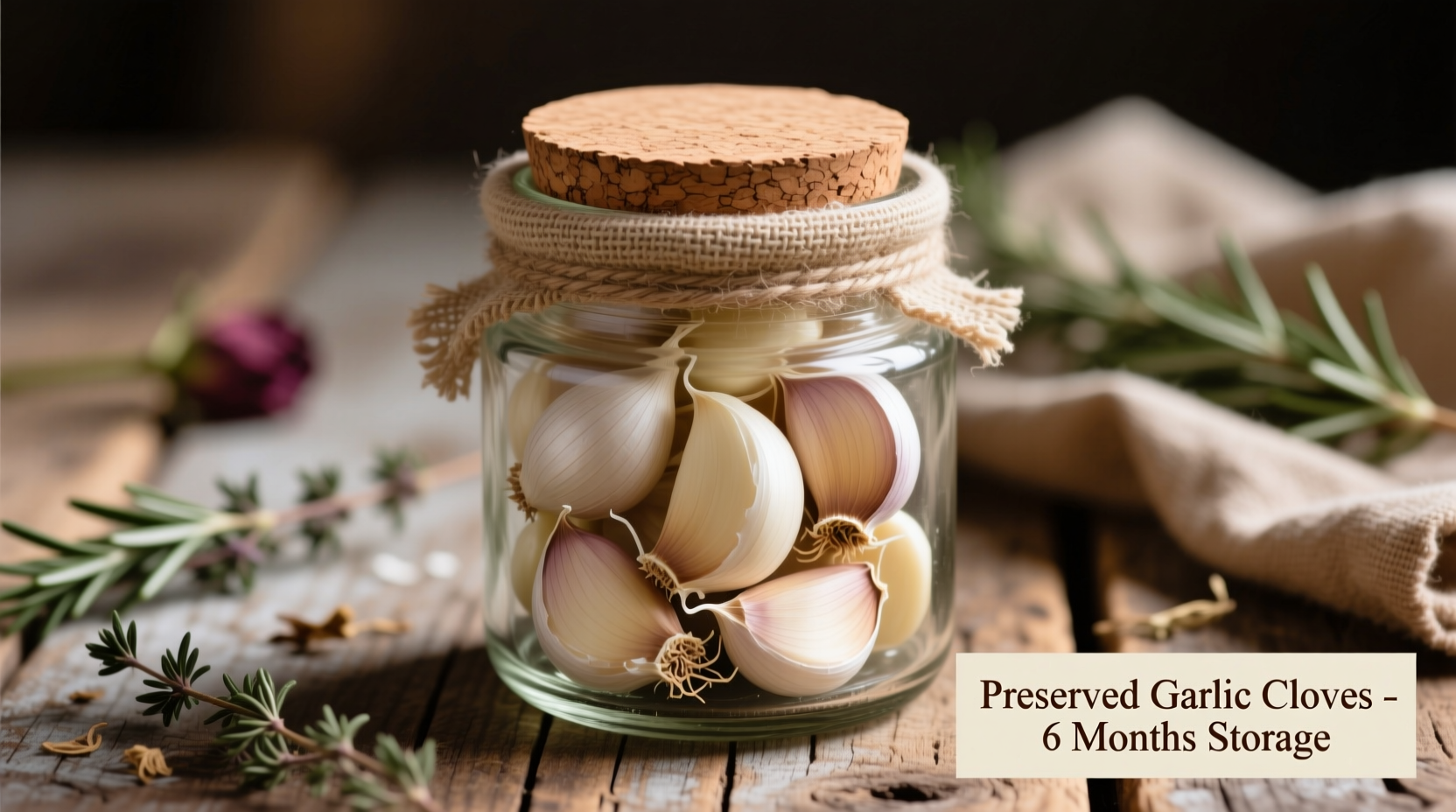Why Proper Garlic Preservation Matters
Garlic transforms from a humble bulb into culinary gold when preserved correctly. According to USDA food safety guidelines, improper preservation—especially with oil—creates ideal conditions for Clostridium botulinum growth. This bacterium produces botulinum toxin in oxygen-free environments like garlic submerged in oil without proper acidification. University of California Food Safety experts confirm that adding vinegar (pH below 4.6) prevents this dangerous risk while maintaining flavor integrity.
Choosing Your Preservation Method
Your cooking habits determine the best preservation approach. Professional chefs like Antonio Rodriguez recommend matching the method to your usage patterns:
| Preservation Method | Best For | Flavor Impact | Time Required |
|---|---|---|---|
| Freezing | Daily cooking needs | Minimal change | 5 minutes prep |
| Vinegar Pickling | Salads, dressings | Tangy enhancement | 15 minutes + 2 weeks |
| Drying | Spice blends, rubs | Concentrated intensity | 8-12 hours |
| Oil Preservation | Italian/Mediterranean dishes | Rich infusion | 10 minutes prep |
| Refrigeration | Short-term use | Fresh flavor | Immediate |
Step-by-Step Preservation Techniques
Freezing Garlic Cloves (3-6 Month Shelf Life)
This method preserves garlic's fresh flavor with minimal preparation. Cornell University's Food Science Department confirms freezing maintains allicin content—the compound responsible for garlic's health benefits—better than other methods.
- Peel cloves and remove germ sprouts
- Place on parchment-lined tray (single layer)
- Flash freeze for 2 hours
- Transfer to airtight freezer bags
- Label with date and variety
Pro tip: Freeze cloves in olive oil cubes for ready-to-use portions. Simply place one clove per compartment in ice trays, cover with oil, and freeze.
Vinegar Preservation (6-12 Month Shelf Life)
Vinegar's acidity prevents botulism while creating flavorful pickled garlic. The National Center for Home Food Preservation specifies that vinegar must have 5% acidity and maintain pH below 4.6 for safe preservation.
- Peel 1 pound garlic cloves
- Submerge in 2 cups white vinegar (5% acidity)
- Add 1 tablespoon pickling salt
- Pour into sterilized jars leaving ½ inch headspace
- Process in boiling water bath for 10 minutes
Store in cool, dark place. Flavor intensifies over 2 weeks. Use within 12 months for best quality.

Drying Garlic (6-12 Month Shelf Life)
Dried garlic concentrates flavor while extending shelf life. Oregon State University Extension notes that proper drying reduces moisture content to 6-8%, preventing mold growth.
Air drying method:
- Leave bulbs intact with stems
- Hang in well-ventilated, dark area
- Allow 3-4 weeks until stems brittle
- Store whole bulbs in mesh bags
Dehydrator method:
- Slice cloves ⅛ inch thick
- Dehydrate at 135°F (57°C) for 8-12 hours
- Store in airtight containers with oxygen absorbers
Safety First: Critical Preservation Guidelines
Garlic preservation requires strict safety protocols. The USDA's Complete Guide to Home Canning states that garlic-in-oil mixtures must include acidification to prevent botulism. Never store garlic in oil at room temperature—always refrigerate and consume within 1 week unless properly acidified.
Signs of spoilage to watch for:
- Bulging lids on preserved jars
- Cloudy preservation liquid
- Foul odors when opening containers
- Visible mold growth
Using Preserved Garlic Effectively
Each preservation method affects how garlic behaves in cooking. Frozen garlic works best when added directly to hot pans—no need to thaw. Vinegar-preserved garlic brings bright acidity to dressings but requires rinsing for neutral-flavor dishes. Dried garlic needs rehydration for most applications except spice blends.
Professional chefs recommend these usage ratios:
- 1 fresh clove = ½ teaspoon frozen minced garlic
- 1 fresh clove = 1 preserved clove (vinegar)
- 1 fresh clove = ⅛ teaspoon garlic powder
Troubleshooting Common Issues
Problem: Garlic turning blue/green during preservation
Solution: This harmless reaction occurs when garlic enzymes interact with acid. The National Center for Home Food Preservation confirms it's safe—flavor remains unaffected.
Problem: Mold growth in oil-preserved garlic
Solution: Discard immediately. Never attempt to salvage—mold penetrates beyond visible areas. Prevent by ensuring pH below 4.6 and proper refrigeration.
Maximizing Flavor Preservation
Garlic's flavor compounds degrade over time. Research from the Journal of Agricultural and Food Chemistry shows that storing preserved garlic at 32-39°F (0-4°C) maintains flavor compounds 40% longer than room temperature storage. Always use dark glass containers for vinegar preservation to prevent light degradation.
For best results, preserve garlic within 2 weeks of harvest. Peak flavor occurs when bulbs have cured for 2-3 weeks at 60-70°F with good air circulation.











 浙公网安备
33010002000092号
浙公网安备
33010002000092号 浙B2-20120091-4
浙B2-20120091-4